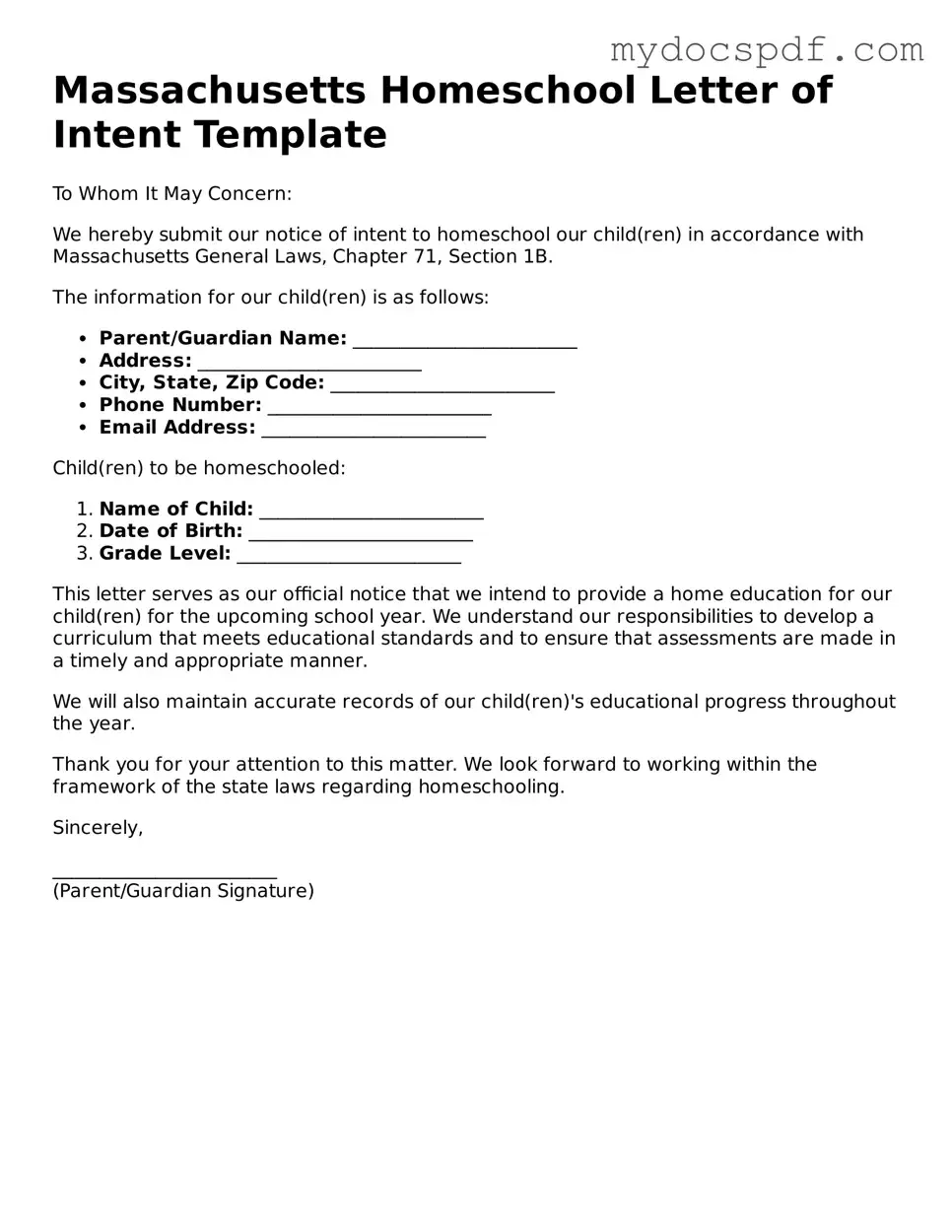Massachusetts Homeschool Letter of Intent Template
To Whom It May Concern:
We hereby submit our notice of intent to homeschool our child(ren) in accordance with Massachusetts General Laws, Chapter 71, Section 1B.
The information for our child(ren) is as follows:
- Parent/Guardian Name: ________________________
- Address: ________________________
- City, State, Zip Code: ________________________
- Phone Number: ________________________
- Email Address: ________________________
Child(ren) to be homeschooled:
- Name of Child: ________________________
- Date of Birth: ________________________
- Grade Level: ________________________
This letter serves as our official notice that we intend to provide a home education for our child(ren) for the upcoming school year. We understand our responsibilities to develop a curriculum that meets educational standards and to ensure that assessments are made in a timely and appropriate manner.
We will also maintain accurate records of our child(ren)'s educational progress throughout the year.
Thank you for your attention to this matter. We look forward to working within the framework of the state laws regarding homeschooling.
Sincerely,
________________________
(Parent/Guardian Signature)
